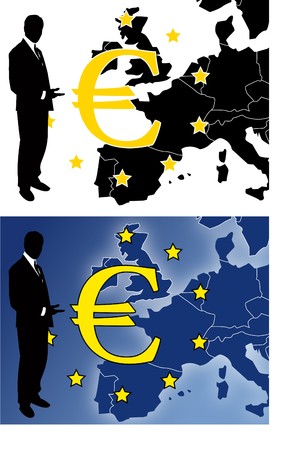Introduction to GDPR and Its Relevance for UK Websites
The General Data Protection Regulation (GDPR) stands as a cornerstone of data privacy standards across Europe, designed to empower individuals with greater control over their personal information. For UK website owners and developers, understanding the nuances of GDPR is not merely a legal obligation but a fundamental aspect of building trust and credibility online. Since the UK’s departure from the European Union, there have been notable shifts in how GDPR is interpreted and enforced locally. However, the UK has retained its own version—known as the UK GDPR—which closely mirrors the EU framework while reflecting domestic priorities. This regulation applies to any website that processes or stores the personal data of individuals residing in the UK, regardless of where the business itself is based. As such, compliance remains crucial not only to avoid hefty penalties but also to demonstrate respect for user rights and ethical stewardship of data. In a digital landscape increasingly defined by transparency and accountability, embracing GDPR principles is key to fostering a secure, responsible, and socially valued online presence.
2. Key Principles of GDPR Every UK Site Should Know
Understanding the core principles of the General Data Protection Regulation (GDPR) is essential for any UK website aiming to remain compliant. While GDPR originated as an EU regulation, its principles have been retained and tailored within the UK’s own data protection framework post-Brexit, ensuring that local businesses continue to uphold high standards of privacy and responsibility. Below, we break down the fundamental principles of GDPR as they apply to the UK digital landscape.
Lawfulness, Fairness, and Transparency
Every website must process personal data lawfully, fairly, and in a transparent manner. This means clearly communicating with users about what data you collect and why. For example, if your site uses cookies or collects sign-up information, you must inform visitors in plain English and ensure they can easily access your privacy policy. Transparency fosters trust—a key value in British society—and helps users feel confident in their online interactions.
Purpose Limitation
Data should only be collected for specified, explicit, and legitimate purposes. For instance, if you gather email addresses for a newsletter, those details cannot be used for unrelated marketing unless additional consent is obtained. Defining and sticking to clear purposes demonstrates ethical practice and respect for individual rights.
Data Minimisation
The principle of data minimisation requires you to collect only what is strictly necessary. In the context of a UK website, this could mean requesting just a name and email address for registration rather than excessive personal details. By limiting data collection, you not only reduce risk but also show commitment to responsible stewardship—a value highly regarded across British business culture.
Main GDPR Principles at a Glance
| Principle | Description | UK Digital Context Example |
|---|---|---|
| Lawfulness, Fairness & Transparency | Process data legally and openly with clear communication. | Publish accessible privacy notices using straightforward English on your website. |
| Purpose Limitation | Use data only for stated purposes. | Email addresses collected for newsletters cannot be repurposed without extra consent. |
| Data Minimisation | Collect only what is needed. | Avoid asking for unnecessary personal information during sign-up processes. |
| Accuracy | Keep personal data up-to-date. | Provide users with options to update their profile information easily. |
| Storage Limitation | Retain data only as long as necessary. | Set retention periods for account data and regularly review archives. |
| Integrity & Confidentiality | Ensure security against unauthorised access or loss. | Implement HTTPS, strong passwords, and regular security audits on your site. |
| Accountability | Demonstrate compliance through documentation and policies. | Maintain records of processing activities; appoint a Data Protection Officer if required. |
The Value of Embedding These Principles Early On
By integrating these GDPR principles from the outset of your website project, you not only fulfil legal obligations but also reinforce values such as fairness, respect, and trust—qualities that resonate deeply within the UK’s digital sector. Proactively adopting these practices positions your brand as both responsible and forward-thinking in the eyes of users and regulators alike.

3. Practical Steps for GDPR Compliance During Website Development
As you embark on building or refreshing your website, embedding data protection into every stage of development is essential to ensure compliance with the General Data Protection Regulation (GDPR). Below are actionable steps tailored for UK websites, designed to help you implement data protection by design and by default—a core GDPR principle that goes beyond tick-box compliance and truly respects user privacy.
Conduct a Data Mapping Exercise
Begin by identifying what personal data your website will collect, process, and store. Map out data flows—consider everything from contact forms and newsletter sign-ups to cookies and third-party plugins. This understanding is crucial for making informed decisions about data minimisation and security.
Minimise Data Collection
Adopt the mantra: only collect what you genuinely need. Review each form or feature on your site—if a field isn’t strictly necessary, leave it out. By limiting unnecessary data collection, you reduce risk and demonstrate your commitment to privacy.
Integrate Consent Mechanisms
For any processing of personal data that relies on consent—such as marketing communications or analytics cookies—implement clear, granular consent mechanisms. Use opt-in checkboxes rather than pre-ticked boxes, and make sure users can easily withdraw consent at any time.
Design Transparent Privacy Notices
Your privacy notice should be prominently displayed and written in plain English. Explain exactly what data you collect, why you collect it, how it will be used, and who it will be shared with. Transparency fosters trust and meets legal obligations under UK GDPR.
Build Robust Security Measures
Security should be woven into your development process from the outset. Use secure connections (HTTPS), keep software up to date, apply strong access controls, and regularly test for vulnerabilities. Don’t forget to encrypt sensitive information both in transit and at rest.
Test and Document Compliance
Before launch, conduct thorough testing to ensure all data protection measures are working as intended. Maintain records of your decision-making process and technical safeguards; this documentation is vital if you ever need to demonstrate your compliance to the ICO.
By thoughtfully integrating these practical steps throughout your website’s build or update, you not only align with UK GDPR but also create a digital presence that respects user rights—a foundation for long-term trust and brand reputation.
Managing Consent: Cookies, Tracking, and User Permissions
When building a website for UK audiences, managing user consent is central to GDPR compliance. The law demands transparency and active participation from users when it comes to cookies and tracking technologies. It’s not enough to inform users after the fact; explicit consent must be obtained before setting any non-essential cookies or initiating tracking scripts.
What Constitutes Valid Consent?
Consent under GDPR must be:
- Freely given: Users should have genuine choice without detriment if they refuse.
- Specific: Consent requests must be clear about what data will be collected and why.
- Informed: Information on cookies and tracking should be easy to understand, avoiding jargon.
- Unambiguous: Users must take a clear affirmative action (such as ticking a box), not simply continue using the site.
- Withdrawable: Users should have an easy way to change their preferences or withdraw consent at any time.
Cookie Banners and Consent Management Platforms (CMPs)
A well-designed cookie banner is more than a legal formality—it’s an opportunity to build trust. In the UK, your banner should allow users to accept, reject, or customise their cookie preferences before non-essential cookies are set. Many organisations use CMPs to automate this process and ensure records of consent are securely stored.
Types of Cookies & User Consent Requirements
| Type of Cookie | Description | User Consent Needed? |
|---|---|---|
| Strictly Necessary | Essential for core website functions (e.g., shopping baskets) | No (but must still inform users) |
| Preferences | Remember choices made by users (e.g., language settings) | Yes |
| Statistics/Analytics | Track website usage for analytics purposes | Yes |
| Marketing/Tracking | Create user profiles for targeted advertising | Yes |
Recording and Managing Consent Properly
The ICO expects that you can demonstrate when and how each user gave consent. This means storing:
- Date and time of consent granted
- The specific permissions given (which categories were accepted/rejected)
- The method used (e.g., via cookie banner or settings page)
- How users can withdraw or amend their preferences in future
Best Practices for UK Websites:
- Review your cookie audit regularly as tracking technologies evolve.
- Update your privacy and cookie policies with plain English explanations tailored for UK users.
- Test your consent mechanisms across devices and browsers for accessibility and clarity.
- Empower users to easily revisit their choices through persistent links or account dashboards.
5. Roles, Responsibilities, and Documentation Under GDPR
Ensuring compliance with the General Data Protection Regulation (GDPR) is not just about technical solutions or legal jargon—it’s fundamentally about accountability and clarity in how personal data is managed on your UK website. Every organisation, regardless of size, must understand its obligations regarding roles, responsibilities, and documentation to build trust with users and demonstrate a genuine commitment to data protection.
Clear Accountability for Data Protection
The cornerstone of GDPR is clear accountability. Website owners and operators must identify whether they are acting as a data controller, a data processor, or both. A data controller determines the purposes and means of processing personal data, while a data processor handles data on behalf of the controller. In some cases, your business may fulfil both roles. It’s crucial to define these responsibilities early in your website development process, ensuring all team members and partners understand their specific duties under the law.
Appointing a Data Protection Officer (DPO)
Under certain circumstances, appointing a Data Protection Officer (DPO) is required by law. For most small UK websites, this may not be mandatory; however, if your site processes large-scale sensitive data or regular monitoring of individuals takes place, you must designate a DPO. The DPO acts as an independent advocate for data protection within your organisation—overseeing compliance efforts, advising on privacy impact assessments, and serving as a point of contact for both authorities and the public.
When Is a DPO Required?
- Your core activities involve large-scale systematic monitoring of individuals (such as behavioural tracking).
- You process special categories of data (such as health or religious information) on a large scale.
If uncertain, it’s best practice to consult legal guidance or the Information Commissioner’s Office (ICO) to avoid potential pitfalls.
Maintaining Accurate Records of Processing Activities
GDPR requires that organisations maintain detailed records of all personal data processing activities—regardless of whether you’re a sole trader or managing a larger digital platform. These records should outline what data is collected, why it is processed, who has access to it, where it is stored, and how long it will be retained. Keeping up-to-date documentation demonstrates transparency and readiness to respond efficiently should the ICO request evidence of your compliance measures.
Key Points for Documentation:
- Document all categories of personal data you collect via your website.
- Clearly state each purpose for processing user data.
- Record any third-party processors or integrations involved (e.g., analytics providers).
- Review and update documentation regularly as your website evolves.
By embedding these practices into your site’s foundation, you don’t just tick boxes—you create a culture of respect for user privacy and set your project apart as ethically responsible in the eyes of the UK public.
6. Dealing with Data Subject Rights and Security Breaches
Respecting the rights of individuals lies at the heart of GDPR compliance for UK websites. As you build your site, its essential to develop robust processes for managing data subject requests, upholding individual rights, and responding swiftly to any data security incidents or complaints.
Processing Subject Access Requests (SARs)
Under GDPR, every individual has the right to access their personal data held by your website. When a Subject Access Request (SAR) is received, you must:
- Acknowledge the request promptly, typically within one month.
- Verify the identity of the requester to prevent unauthorised access.
- Provide a copy of all relevant personal data in a clear, accessible format.
- Include information about how and why their data is being processed, along with details on data retention periods and their rights under GDPR.
Upholding Individual Rights
Beyond SARs, individuals have several additional rights including rectification, erasure (the right to be forgotten), restriction of processing, and objection to certain uses of their data. To remain compliant:
- Create straightforward procedures for users to exercise these rights through your website—such as dedicated contact forms or email addresses.
- Train your team on recognising and correctly handling such requests.
- Respond within statutory timeframes and document all actions taken in response to requests.
Responding Effectively to Data Breaches
No matter how well-protected your website is, data breaches can occur. The key is in how you respond:
- Have an incident response plan outlining steps for identifying, containing, and assessing breaches.
- If a breach risks individuals rights or freedoms, notify the Information Commissioner’s Office (ICO) within 72 hours of becoming aware.
- Inform affected individuals without undue delay if the breach poses a high risk to them.
- Keep detailed records of all breaches—even those not reported—to demonstrate accountability.
Cultivating Trust Through Transparency
By proactively supporting individuals’ data rights and demonstrating readiness in case of a breach, you reinforce user trust—a cornerstone of sustainable digital growth in the UK. Prioritising transparency and accountability not only helps you meet legal requirements but also strengthens your reputation as a responsible web operator dedicated to upholding social values in practice.
7. Final Thoughts: Embedding Trust and Social Value Through Compliance
Prioritising GDPR compliance is far more than a legal necessity for UK websites—it is a foundational step towards fostering public trust, demonstrating social responsibility, and elevating your brand’s reputation in an increasingly privacy-conscious society. By embedding data protection principles into your website from the outset, you signal to your users that their rights and privacy are valued, and that your organisation operates with integrity and transparency.
Building Lasting Public Trust
When visitors know that their personal data is handled with care, they are more likely to engage with your site, share information, and return in the future. In the UK, where digital privacy concerns are at the forefront of public discourse, earning this trust can set you apart from competitors and create loyal relationships built on mutual respect.
Demonstrating Social Responsibility
Compliance also reflects your commitment to wider social values. By respecting individual privacy rights and upholding ethical standards, your website contributes positively to the digital ecosystem. This approach aligns with growing expectations among British consumers for businesses to act responsibly—not just for profit, but for the common good.
Enhancing Your Reputation in the UK Market
A reputation for strong data protection can become one of your most valuable assets. Word spreads quickly when organisations handle data breaches poorly or neglect user consent, often resulting in lasting damage. Conversely, proactive compliance strengthens your credibility within the UK market and signals that you are a trustworthy steward of user information.
In summary, integrating GDPR compliance into your web development process is an investment in both legal security and social value. By doing so, you not only avoid costly penalties but also build a website that stands as a beacon of trustworthiness and positive impact—key qualities for success in today’s UK digital landscape.


